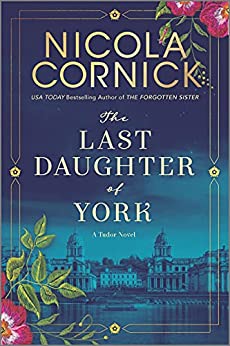 The Last Daughter of York by Nicola Cornick
The Last Daughter of York by Nicola Cornick Format: eARC
Source: supplied by publisher via Edelweiss
Formats available: hardcover, large print, paperback, ebook, audiobook
Genres: historical fantasy, historical fiction, historical mystery, timeslip fiction
Pages: 368
Published by Graydon House on November 16, 2021
Purchasing Info: Author's Website, Publisher's Website, Amazon, Barnes & Noble, Kobo, Bookshop.org
Goodreads
“An engaging, fast-paced read for fans of Philippa Gregory and of dual-timeline historical fiction." —Library Journal
In the winter of 1483, Francis Lovell is Richard III’s Lord Chamberlain and confidant, but the threat of Henry Tudor’s rebels has the king entrusting to Francis and his wife, Anne, his most crucial mission: protecting the young Richard of York, his brother’s surviving son and a threat to Henry’s claims to the throne.
Two years later, Richard III is dead, and Anne hides the young prince of York while Francis is hunted by agents of the new king, Henry VII. Running out of options to keep her husband and the boy safe, Anne uses the power of an ancient family relic to send them away, knowing that in doing so she will never see Francis again.
In the present day, Serena Warren has been haunted by her past ever since her twin sister, Caitlin, disappeared. But when Caitlin’s bones are discovered interred in a church vault that hasn’t been opened since the eighteenth century, the police are baffled. Piecing together local folklore that speaks of a magical relic with her own hazy memories of the day Caitlin vanished, Serena begins to uncover an impossible secret that her grandfather has kept hidden, one that connects her to Anne, Francis and the young Duke of York.
Inspired by the enduring mystery of the Princes in the Tower, Nicola Cornick cleverly interprets the events into a dazzling novel set between a present-day mystery and a country on the brink of Tudor rule.
My Review:
Once upon a time (in 1951) there was a mystery titled The Daughter of Time written by Josephine Tey (which was named as the greatest crime novel of all time by the Crime Writers’ Association). In at least some versions of causality, that book is most likely responsible for this book, either directly or indirectly. It’s certainly directly responsible for my personal interest in Richard III and the end of the Plantagenet dynasty, every bit as much as it was for the 21st century protagonist of the story.
And thereby hangs this tale – which actually does reference that earlier book.
The mystery of the “Princes in the Tower” has never been solved. What is known is that, as is related in the 15th century sections of this book, the two young sons of Edward IV were taken to the Tower of London – which at that time was still a royal residence in addition to being a prison – for “safekeeping”. Their father was dead and the older boy should have become Edward V. Instead their uncle Richard of Gloucester became Richard III and eventually one of Shakespeare’s more memorable villains.
It’s Richard III’s body that was discovered under a car park in Leicester in 2012.
The two boys disappeared from the Tower during Richard’s brief and tumultuous reign. Shakespeare’s account portrays Richard as a tyrant and the murderer of his nephews. Tey’s book, with its armchair investigation of the historical mystery, rather convincingly gives a different accounting of the events.
Including a persuasive reminder that history is written by the victors, and that Shakespeare’s play was based on accounts written by those victors and under the rule of a monarch who was the direct inheritor of those victors. He was hardly an authoritative historical source even if he was a memorable one.
The mystery has never been solved, and unlike that of their infamous uncle, the bodies of the two missing princes have not been verifiably found. The bodies of two boys who were purported to have been the princes were discovered in the Tower in the 17th century. But, unlike the more recent discovery of Richard III’s body, no DNA tests have ever been conducted and the identity of the bodies is in dispute.
The reason why all of this long ago history matters in this time slip story is that the slip in time takes the reader back to the last years of Edward IV’s reign and the events that followed. In that past, we follow Anne Fitzhugh and her husband Francis Lovell, a staunch supporter of Richard of Gloucester. While her life is fictionalized, the key events of her part of the story match recorded history – particularly the version of that history that Tey popularized in her novel.
Except for one singular part – the link between Anne and Francis Lovell’s past and Serena Warren and Jack Lovell’s present. A link that may remind readers a tiny bit of Outlander.
Just a tiny bit.
What was utterly fascinating about this story was the way that the historical events lead to the mystery in the present. That Serena’s twin sister Caitlin disappeared without a trace 11 years before, and that her body has just turned up in an archeological dig on the grounds of Lovell Minster.
In a tomb that has not been disturbed since 1708.
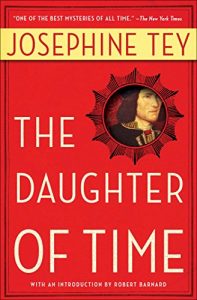 The police are baffled. Serena’s parents are not holding up at all well, but that’s neither new nor unexpected. Serena is the stalwart one in the family. But she’s had dissociative amnesia since her twin disappeared. Now she needs to remember what she forgot, in the hopes that those lost memories hold the key to her sister’s murder.
The police are baffled. Serena’s parents are not holding up at all well, but that’s neither new nor unexpected. Serena is the stalwart one in the family. But she’s had dissociative amnesia since her twin disappeared. Now she needs to remember what she forgot, in the hopes that those lost memories hold the key to her sister’s murder.
Escape Rating A+: Obviously, I loved this one for the history. Reading The Last Daughter of York made me want to go back and re-read The Daughter of Time yet again. When I read it the first time, I was convinced that Richard III was not the villain that Shakespeare painted him to be, and I remain convinced.
What fascinated me about the historical aspects of this story is the way that the author made the fiction fit the known facts while still managing to add more than a touch of magic and mystery.
While there is a bit of paranormal “woo-woo” in the way that Caitlin’s body ended up in that tomb, the 21st century part of this story, the mystery of her disappearance, was also resolved more than satisfactorily. Serena’s entire family needs closure and the story does an excellent job of making that happen while adding just a bit of something extra into the mix.
I’m far from an unbiased reviewer this time around. If the history hadn’t worked for me, I wouldn’t have been able to appreciate the rest. Studying this particular era was a big part of my intellectual life for a very long time. Because this did work, and beautifully so, I was all in.
One final note. In the case of The Daughter of Time, the title was a bit of a pun. As Leonardo da Vinci said in his notebooks,, “Truth alone is the daughter of time.” The title of this book is both a play on that title and, I think, a prophecy – or a legacy. The story, in the end, is literally the story of the last daughter of the House of York.
I’ll leave it to you to discover just how that happens, and I wish you joy of this excellent read.









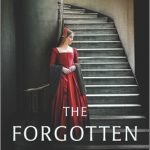
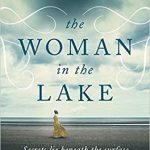
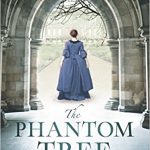







I really need to read this one soon. I love that period of English history and have always been on the side of Richard 111. Thanks for the review.
This was just a lovely read. It doesn’t whitewash Richard the way that Tey does, but it does set him more realistically in his time. If you enjoy the period this is an excellent read.
Marlene Harris recently posted..Stacking the Shelves (476)
Tey made me into a Ricardian, as well. I haven’t reread The Daughter of Time in many years. Frankly, I’ve been hoping for a good audiobook version to be released. I’m sure you’ve also read Sharon Kay Penman’s amazing, but devastating, The Sunne in Splendour.
I’m so looking forward to The Last Daughter of York and am glad it got a thumbs up from you.
I reread Daughter of Time about a decade ago. The framing story does not hold up – at least in the sense that it was contemporary when she wrote it and it clearly isn’t now. The methods of armchair investigation seem quaint, but the conversations and the conclusions still feel spot on. Yes, I’ve read The Sunne in Splendour, also a long time ago, and Elizabeth Peters’ Murders of Richard III and also John M. Ford’s The Dragon Waiting which all take Richard III into interesting permutations. The history parts of Last Daughter set everything in its time and place without either whitewash or blackwash which felt right. Enjoy the read!
Marlene Harris recently posted..Stacking the Shelves (476)